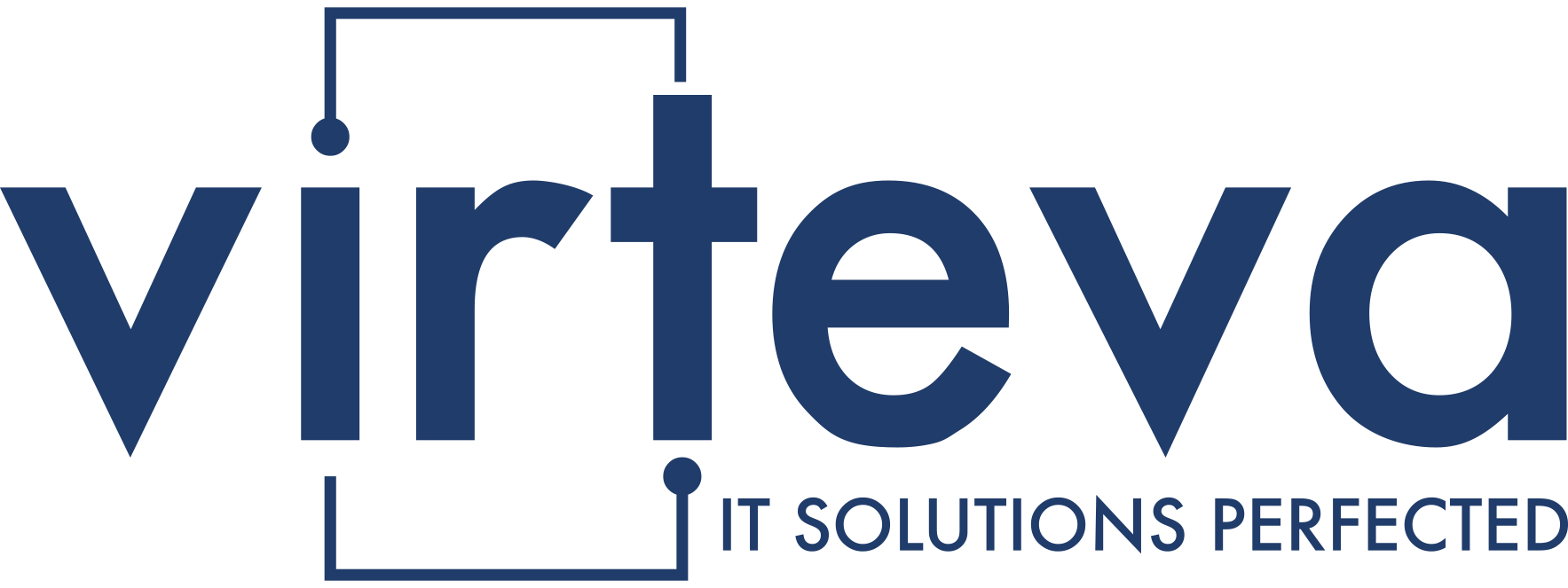Managed IT Services for healthcare are an essential part of the modern ecosystem we call healthcare. Why? Because the industry has become entangled in a web of technology — this is both a blessing and a curse. It allows for a more dynamic industry with streamlined processes and a more exacting nature while also requiring a vast amount of maintenance and staff members to maintain. By outsourcing the management and maintenance of IT infrastructure to specialized providers, healthcare facilities can focus on delivering quality patient care without the burden of complex IT issues.
The implementation of managed IT services not only enhances operational efficiency but also ensures the protection of sensitive patient data, a dire concern in the healthcare industry. Ultimately, by leveraging managed IT solutions, healthcare providers can improve patient outcomes, reduce costs, and maintain compliance with stringent industry regulations.
What Healthcare Managed IT Services Mean
Involves outsourcing the management and maintenance of an organization’s IT infrastructure to a specialized third-party provider. This comprehensive approach encompasses a wide range of functions, including network security, data backup and recovery, system monitoring, and help desk support, ensuring compliance with healthcare regulations. By partnering with a managed IT service provider, healthcare organizations can optimize their IT operations, reduce downtime, protect sensitive patient data, and ultimately improve patient care delivery.

Specific healthcare IT managed services include robust cybersecurity measures to safeguard sensitive patient data, implementation, and management of Electronic Health Records (EHR) systems, network infrastructure maintenance for seamless patient care, cloud-based solutions for data storage and accessibility, disaster recovery planning to protect critical systems, remote monitoring and management of medical devices, and help desk support for efficient IT troubleshooting. These services work in tandem to ensure optimal IT performance, data security, and patient care delivery.
Here are some stats on the practice:
- By 2022, the global healthcare IT market was worth USD 303.4 billion. Nonetheless, it’s expected to reach $974.5 billion by 2027, with a CAGR of 19.8%.
- The healthcare managed IT services market is estimated to reach $728.63 billion, with a growing rate of 15.24% CAGR from 2024 to 2029.
- The global healthcare IT market size is estimated to hit around USD 1069.13 billion at a CAGR of 18.30% from 2023 to 2032.
The Case of St. Mary’s
St. Mary’s Regional Medical Center, facing challenges with system outages, slow EHR performance, and cybersecurity risks, partnered with a managed IT services provider. Outsourcing IT management significantly enhanced patient care through improved EHR performance, reduced wait times, and better access to patient information.
Operational efficiency soared as automated systems for appointment scheduling, billing, and inventory management streamlined workflows. Proactive cybersecurity measures protected patient privacy and the hospital’s reputation, while cost savings were realized through consolidated IT resources.
Technology in Healthcare
The healthcare industry has undergone a dramatic transformation with the increasing integration of technology. From Electronic Health Records (EHRs) streamlining patient data management to telemedicine expanding access to care, technology has become indispensable.
Advanced analytics enable data-driven decision-making, while wearable devices monitor patient health in real-time. This technological evolution has not only improved efficiency but also enhanced patient outcomes, fostering a more connected and personalized healthcare experience.
Healthcare Managed IT Services – Their Benefits
Managed IT services can rapidly galvanize and enhance various aspects of healthcare operations. Here’s how:
Scheduling
Implements advanced scheduling software that automates appointment bookings, sends reminders to patients, and optimizes the allocation of resources such as staff and equipment. This reduces scheduling errors and no-shows, leading to efficient use of time and resources.
Billing
Integrates billing systems and automates the process of generating and sending invoices, processing payments, and managing insurance claims. This speeds up the billing cycle and reduces the risk of errors, ensuring compliance with regulatory requirements.
Patient Records
The implementation of electronic health records systems eliminates the need for paper-based files and reduces the risk of lost or misplaced records. This enhances the security and privacy of sensitive patient information.
Reduction in Paperwork and Administrative Burdens
By digitizing and automating various administrative tasks, managed IT services can minimize the amount of paperwork involved in healthcare operations. This saves time and resources, reducing errors and improving overall efficiency.
Improved Collaboration
Facilitates seamless communication and data sharing between different departments and facilities through secure networks and collaborative platforms. This enables healthcare providers to access and exchange information in real-time, leading to better coordination of care.
Data Analytics and Creating Personalized Treatment Plans
Data analytics enables the creation of personalized treatment plans. By analyzing vast amounts of patient data, providers can identify patterns and trends that inform tailored treatment strategies. Advanced algorithms process this data to predict treatment outcomes, optimize drug dosages, and minimize side effects. This precision medicine approach not only improves patient outcomes but also enhances overall healthcare efficiency by reducing trial-and-error methods.
Personalized Care & IT Services – Examples
- Wearable Devices and Mobile Apps: Collect real-time patient data, allowing continuous monitoring of vital signs and early detection of health issues. This data informs tailored treatment plans and medication management.
- Telemedicine Platforms: Facilitate remote consultations, making healthcare accessible to patients in rural or underserved areas.
- Predictive Analytics: Identify patients at risk for specific conditions, enabling proactive interventions.
- Personalized Nutrition and Fitness Plans: These are generated based on individual genetic makeup and lifestyle factors.
Patient Satisfaction and Managed IT Services
- Streamlining Administrative Processes: Patients experience less waiting time and frustration for appointment scheduling and check-in.
- Effective Electronic Health Record (EHR) Systems: Allow for better communication between patients and providers, fostering trust and confidence.
- Patient Portals: Offer convenient access to medical records, test results, and appointment scheduling, empowering patients to take an active role in their healthcare.
- Real-Time Communication Tools: Enable prompt responses to patient inquiries and concerns, demonstrating care and attention.
Managed IT Services & Service Providers
Resource Planning and Utilization: By meticulously monitoring IT infrastructure, service providers can identify inefficiencies, optimize hardware and software usage, and predict future resource needs.
Security Services and Protocols: Managed IT service providers implement robust security measures and protocols to safeguard sensitive patient data. This includes firewalls, intrusion detection systems, encryption, regular security audits, and employee training to create a fortified defense against cyberattacks.
Steps for Smoothly Integrating Managed IT Services into Existing Healthcare Operations
Here’s a step-by-step approach:
Assessment: Conduct a comprehensive assessment of current IT infrastructure, systems, and workflows to identify gaps and opportunities for improvement.
Vendor Selection: Research and select a reputable managed IT services provider with experience in the healthcare industry and a track record of successful implementations.
Implementation and Testing: Work closely with the managed IT services provider to implement the solutions while testing new systems and processes to identify any issues or inconsistencies before full deployment.
Data Security: Prioritize data security and compliance throughout the integration process by implementing strong security measures to protect sensitive patient information.
Monitor Performance: Regularly monitor the performance of the integrated IT services to assess their impact on operational efficiency, patient care, and staff satisfaction.
Continuous Improvement: Stay updated on advances in technology and best practices in healthcare IT to ensure ongoing success and innovation.
Potential Long-Term Advantages of Adopting Managed IT Services

Enhanced Focus on Core Competencies
Healthcare providers can concentrate on delivering quality patient care, medical research, and strategic planning.
Scalability and Flexibility
Managed IT services can easily adapt to changing healthcare needs.
Access to Expertise
Healthcare IT-managed service providers offer specialized knowledge and skills, ensuring that healthcare organizations stay current with industry best practices and emerging technologies.
Cost Efficiency
By optimizing IT resources and preventing costly downtime, healthcare IT-managed services contribute to long-term cost savings.
Risk Mitigation
Robust security measures and disaster recovery plans implemented by managed IT providers protect sensitive patient data and ensure business continuity.
Healthcare and Tech
Managed IT services in healthcare are essential for boosting efficiency and improving patient care. By handling complex IT infrastructure, these services free up healthcare providers to focus on patient needs. From streamlining administrative tasks and optimizing resource allocation to enhancing cybersecurity and enabling data-driven decision-making, managed IT services streamline operations. Healthcare providers can leverage this technology to improve patient satisfaction, reduce costs, and stay compliant with industry regulations, ultimately leading to better patient outcomes.




